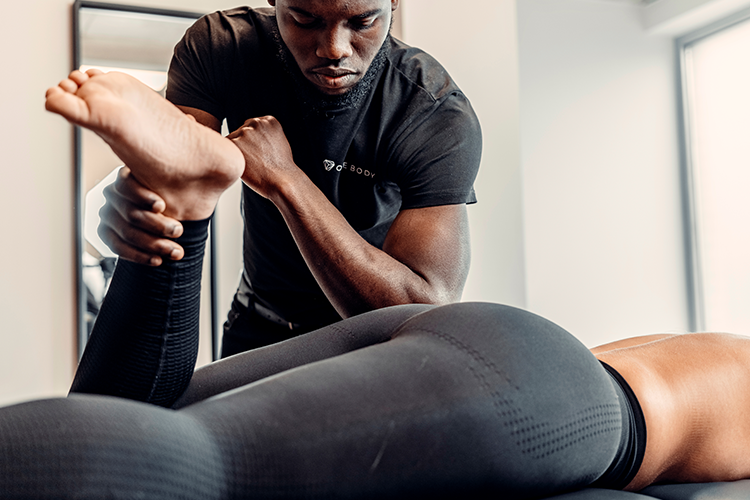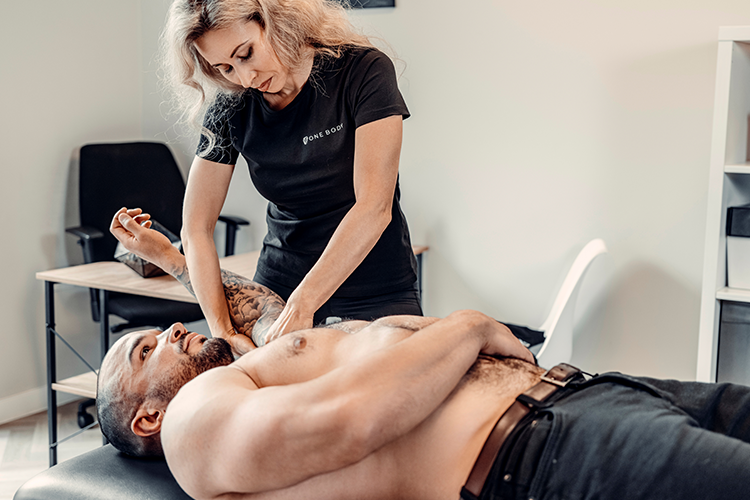Table of Contents
Main Takeaways
- Speeds up recovery process: Deep tissue massage breaks down scar tissue and boosts circulation by up to 30%, accelerating healing and restoring mobility.
- Reduces inflammation naturally: It helps manage swelling, promotes lymphatic drainage, and improves flexibility, easing stiffness during recovery.
- Effective for common injuries: Conditions like muscle strains, lower back pain, and whiplash respond well to deep tissue massage, offering long-term relief.
- Timing is essential: Start with light massage 3–14 days after injury, and shift to deep tissue massage from week two onward, depending on severity.
- Expert care at One Body LDN: Their experienced therapists customise treatments and accept major health insurance plans for accessible, effective recovery support.
Introduction: Using Deep Tissue Massage for Injury Recovery
Recovering from an injury can be a slow and frustrating process, especially if pain and stiffness limit your mobility. Whether you are dealing with a sports injury, post-surgical stiffness, or chronic pain, deep tissue massage is an effective therapy that can help speed up recovery.
This article explores why deep tissue massage is recommended for injuries, how it aids recovery, and when to start treatment.
How Deep Tissue Massage Aids Recovery After Injury

Breaking Down Scar Tissue and Improving Circulation
When injuries occur, the body forms scar tissue to repair the damage. However, excess scar tissue can lead to restricted movement and prolonged pain. Deep tissue massage helps break down adhesions, improving flexibility and restoring normal function.
Additionally, research shows that deep tissue massage increases circulation by up to 30%, helping deliver oxygen and nutrients to injured muscles and accelerating the healing process.
Restoring Flexibility and Reducing Inflammation
Inflammation is a natural part of the healing process, but excessive inflammation can lead to stiffness and discomfort. Deep tissue massage works by:
- Reducing swelling and inflammation in affected areas.
- Promoting lymphatic drainage, which helps remove toxins from the body.
- Enhancing range of motion by loosening tight muscles and improving mobility.
Common Injuries That Benefit from Deep Tissue Massage in London

Muscle Strains and Ligament Sprains
Muscle strains and ligament sprains are among the most common sports injuries. Deep tissue massage helps by reducing muscle tension and restoring strength, ensuring a quicker and more effective recovery.
Lower Back Injuries
Chronic lower back pain affects over 40% of UK adults at some point in their lives. Deep tissue massage is particularly effective for herniated discs, muscle spasms, and sciatic pain, providing long-term relief.
Whiplash and Neck Injuries
Whiplash from accidents can cause severe pain and restricted movement. Deep tissue massage releases tension in the neck muscles, alleviating stiffness and promoting healing.
How Long After an Injury Should You Start Deep Tissue Massage?

The Healing Timeline and When It’s Safe to Start Massage Treatment
The right time to start deep tissue massage depends on the severity of the injury:
- Acute injuries (0-3 days): Avoid deep tissue massage; focus on RICE (Rest, Ice, Compression, Elevation).
- Subacute phase (3 days – 2 weeks): Light massage can help reduce swelling and improve circulation.
- Chronic injuries (2+ weeks): Deep tissue massage is most effective in this phase, helping break down scar tissue and restore function.For more deep information see the blog Why is Deep Tissue Massage Effective for Chronic Pain.
For post-surgical patients, massage is typically recommended after 4-6 weeks, but always consult your healthcare provider before starting treatment.
Why One Body LDN is the Best Choice for Injury Recovery Massage

Our Therapists’ Experience in Treating Injuries
At One Body LDN, we specialise in treating injuries with expert-led deep tissue massage techniques. Our clinic stands out because:
- Our therapists are trained in sports rehabilitation and physiotherapy.
- We tailor each session to your specific injury and recovery stage.
- We are approved by major health insurers, including Bupa, AXA PPP, Cigna, WPA, and Healix, making our treatments accessible to more clients.
Book a Consultation for Injury Recovery Massage in London
If you are struggling with pain and stiffness after an injury, One Body LDN can help you regain mobility and speed up your recovery.
👉 Book your deep tissue massage today or schedule a free consultation to discuss your treatment plan with one of our specialists.
Sports Massage FAQs
Is deep tissue massage safe after an injury?
Yes, but the timing depends on the type of injury. For acute injuries, wait at least a few days before starting massage therapy.
How often should I get deep tissue massage for injury recovery?
For optimal results, weekly or bi-weekly sessions are recommended, depending on the severity of your condition.
Can deep tissue massage prevent future injuries?
Yes, regular sessions help maintain muscle flexibility, improve circulation, and reduce the risk of re-injury.
Does private health insurance cover deep tissue massage for injury recovery?
Many private health insurers, including Bupa, AXA PPP, Cigna, WPA, and Healix, cover deep tissue massage as part of physiotherapy or rehabilitation.
How soon can I return to sports after deep tissue massage?
Most clients experience improved mobility within a few sessions, but it’s best to follow your therapist’s advice on resuming intense activities.



